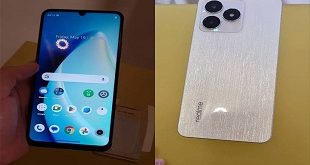Introduction
The world of virtual reality (VR) has been evolving rapidly, and Meta, formerly known as Facebook, has been at the forefront of this transformation. The Meta Quest series, with its innovative hardware and software updates, continues to push the boundaries of what’s possible in VR. The latest iteration, the Meta Quest 3, introduces a groundbreaking feature that allows users to trade graphics for battery life, as well as integrates YouTube Live Chat, making the VR experience even more immersive and interactive. In this article, we will delve into the exciting developments of the Meta Quest 3 and explore how these enhancements are set to redefine the VR landscape.
Graphics vs. Battery Life: The Trade-Off
The Meta Quest 3 boasts impressive graphics capabilities, thanks to its powerful hardware and advanced software. However, VR enthusiasts are well aware that high-quality graphics can come at the cost of reduced battery life. The power-hungry components of a VR headset, such as the display, processor, and sensors, demand a significant amount of energy to deliver a seamless and immersive experience. This has often resulted in users having to compromise between stunning visuals and extended playtime.
With the Meta Quest 3, Meta has introduced an innovative solution to this longstanding dilemma. Users can now customize their VR experience by adjusting the graphics settings to their preference. This means that if you’re engaged in a visually demanding game or experience, you can maximize graphics quality for an ultra-realistic feel. On the other hand, when you’re enjoying a more casual or extended VR session and want to conserve battery, you can opt for a lower graphics setting.
This feature provides a level of flexibility that has been highly anticipated in the VR community. By allowing users to make a conscious choice between graphics quality and battery life, Meta has effectively addressed one of the most significant challenges facing VR enthusiasts. The Meta Quest 3 empowers users to tailor their VR experience to their specific needs, making it a versatile device for a wide range of applications, from gaming to productivity.
YouTube Live Chat Integration: Elevating the Social VR Experience
As Meta continues to explore the integration of social elements into VR, the inclusion of YouTube Live Chat is a noteworthy development. YouTube, the world’s leading video-sharing platform, is a hub for content creators, streamers, and their audiences. By merging VR with YouTube Live Chat, Meta is taking a step towards creating a more immersive and interactive social experience in the metaverse.
YouTube Live Chat integration allows Meta Quest 3 users to engage with their favorite content creators in a whole new way. Whether you’re watching a live gaming stream, a virtual concert, or an educational lecture, you can now interact with the content creator and other viewers in real-time. This not only enhances the sense of community but also brings the audience closer to the creators, fostering a more intimate and engaging connection.
The integration also opens up new possibilities for content creators. They can now host interactive Q&A sessions, poll their audience, and receive instant feedback, creating a dynamic and engaging experience for their viewers. Furthermore, as VR continues to grow as a platform for events and gatherings, this feature can facilitate more immersive virtual meetups and conferences with real-time interaction.
YouTube Live Chat in the Meta Quest 3 promises to be a game-changer for content creators, viewers, and the platform itself. It solidifies VR as a medium for not just passive consumption but active participation in the digital world.
Under the Hood: Hardware and Software Enhancements
To achieve these impressive capabilities, the Meta Quest 3 features a series of hardware and software enhancements. The device is powered by a cutting-edge processor, offering improved performance for both graphics rendering and general VR experiences. The display has been fine-tuned for better clarity and smoother motion, ensuring that users can fully appreciate the graphics quality when they choose to prioritize it.
On the software front, the Meta Quest 3 runs on an updated version of the Meta VR operating system, which has been optimized for flexibility in graphics settings. The user interface has been redesigned to make it easier for users to adjust these settings on the fly, ensuring a seamless transition between different graphical modes.
Additionally, the device incorporates eye-tracking technology, which not only enhances the VR experience but also contributes to the battery-saving feature. When users look away from the display, the device can automatically reduce graphics quality, conserving power until the user returns their focus to the VR experience.
The Future of VR and the Metaverse
The Meta Quest 3, with its graphics-battery trade-off and YouTube Live Chat integration, represents a significant leap forward in the evolution of VR technology. However, these innovations are not isolated developments; they are part of a broader vision for the metaverse, a shared digital universe where individuals can interact, create, and explore in a virtual space.
Meta, with its vast resources and ambitious goals, is at the forefront of shaping this metaverse. The integration of social elements like YouTube Live Chat is a testament to the company’s dedication to creating a truly immersive and interactive digital world. As VR technology continues to advance, the metaverse becomes an increasingly tangible and exciting concept.
The Meta Quest 3, in conjunction with the metaverse, has the potential to transform various aspects of our lives. From gaming and entertainment to education and remote work, the possibilities are boundless. The ability to customize graphics settings to balance performance and battery life, combined with the immersive social interaction of YouTube Live Chat, opens up new horizons for what VR can offer.
Challenges and Considerations
While the Meta Quest 3’s new features are undoubtedly groundbreaking, they also come with certain considerations and challenges. Battery life remains a critical concern for VR users, and although the graphics-battery trade-off feature is a significant improvement, it may not completely eliminate the need for frequent recharging during extended use.
Moreover, VR adoption still faces hurdles related to accessibility, affordability, and technical requirements. The Meta Quest 3 is a high-quality device, but it comes with a premium price tag, limiting its accessibility to a broader audience. As the metaverse expands, addressing these challenges will be crucial to ensure that virtual reality becomes a more inclusive and diverse space.
Conclusion
The Meta Quest 3’s introduction of the graphics-battery trade-off and YouTube Live Chat integration is a testament to Meta’s commitment to pushing the boundaries of what VR can offer. These features not only enhance the user experience but also pave the way for a more interactive, social, and engaging metaverse.
As VR technology continues to evolve, it is essential to keep an eye on how these innovations will impact various industries, from entertainment and gaming to education and business. The Meta Quest 3 is not just a device; it represents a step forward in the ongoing journey towards the metaverse, a digital world where we can redefine how we connect, create, and experience the virtual realm. With Meta at the helm of this transformation, the future of VR looks promising and more exciting than ever before.


